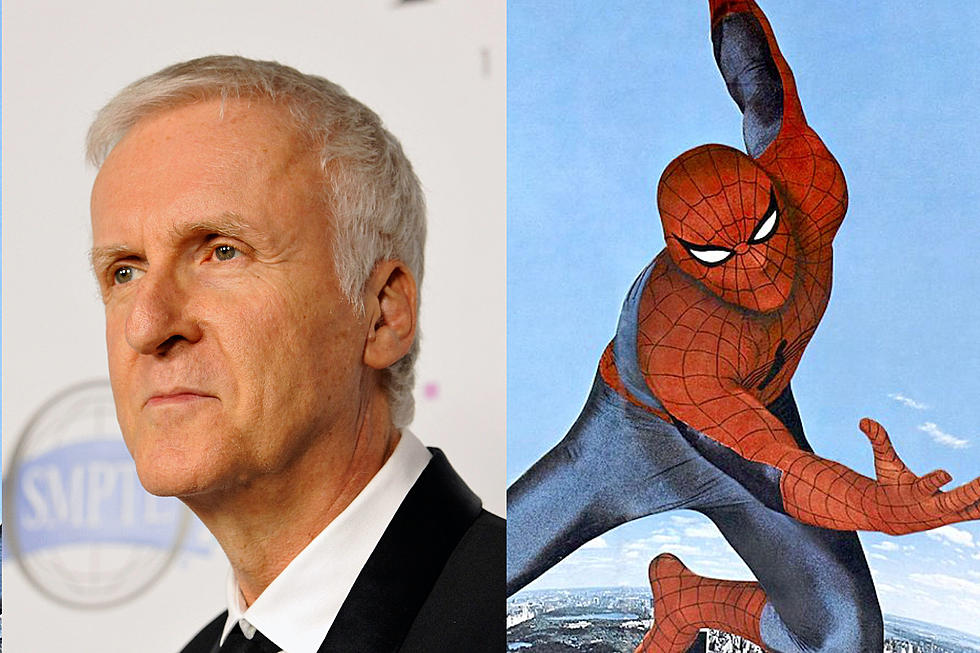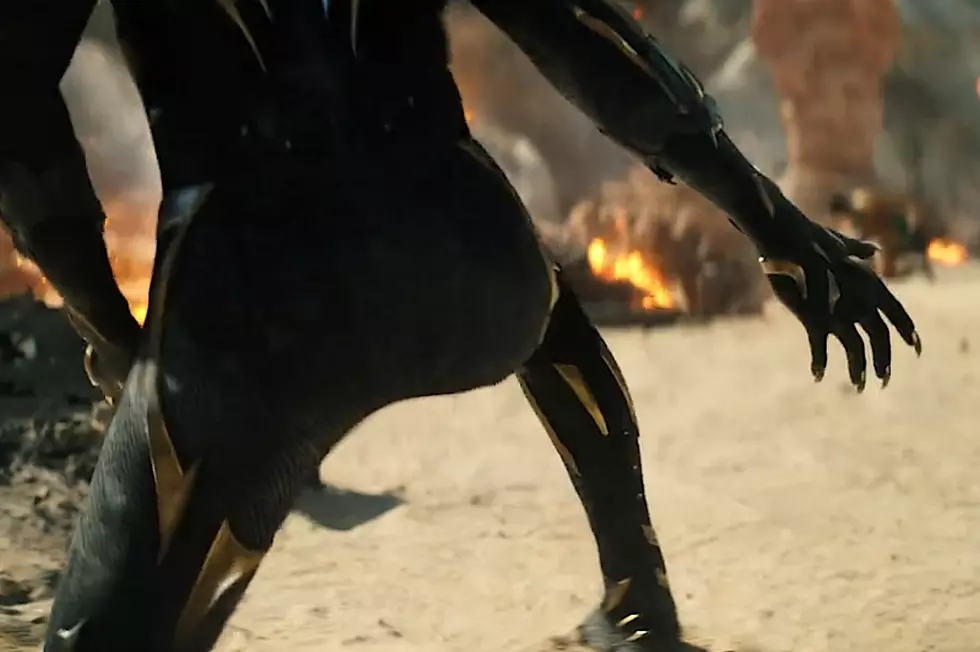
James Cameron Calls His Spider-Man ‘The Greatest Movie I Never Made’
There have been a lot of very good Spider-Man movies; at least two by Sam Raimi (or three, depending on who you talk to) plus several by Jon Watts featuring Tom Holland as your friendly neighborhood wall-crawler. But the greatest Spider-Man movie is arguably one we never got to see: James Cameron’s Spider-Man.
In between Terminator 2: Judgment Day and Titanic, Cameron spent several years trying to get a Spider-Man movie off the ground. In 2021, it sounds impossible that James freaking Cameron — the guy behind The Terminator and Aliens — couldn’t get someone to bankroll his version of Spider-Man. But the 1990s were a different time; at that point, Marvel still only had a single theatrical film to its credit. And it was Howard the Duck. Anyone wanting to turn a Marvel comic into a Hollywood movie faced an uphill battle. Even someone as successful as James Cameron.
Cameron writes about his struggles to make a Spider-Man film in his new book, Tech Noir: The Art of James Cameron. This massive, beautiful volume contains hundreds of pieces of artwork by Cameron — sketches, paintings, concept art —along with Cameron’s own commentary about his inspirations and technique. The book concludes with two illustrations that Cameron painted while he was developing Spider-Man to show potential backers what he wanted his film to look and feel like.
Both Cameron Spidey paintings peer down at the character as he climbs up the side of a building while New York City bustles below him. In Tech Noir, Cameron calls Spider-Man “the greatest movie I never made.” When I had the opportunity to talk to Cameron as part of a Zoom roundtable discussion of Tech Noir, I asked: Why does he consider his Spider-Man the great white whale of his career, and how would his vision of the character been different from the many Spider-Man films we’ve seen to date?
“I think it would’ve been very different,” Cameron told me. For one thing, he noted, he worked on his treatment with “Stan Lee’s blessing” and advice. “I didn’t make a move without asking him permission,” Cameron added, before outlining his concept for the character.
“The first thing you’ve got to get your mind around,” Cameron continued, “is it’s not Spider-Man. He goes by Spider-Man, but he’s not Spider-Man. He’s Spider-Kid. He’s Spider-High-School-Kid. He’s kind of geeky and nobody notices him and he’s socially unpopular and all that stuff.”
With that in mind, Cameron saw Spider-man as “a great metaphor,” with his superpowers representing “that untapped reservoir of potential that people have that they don’t recognize in themselves. And it was also in my mind a metaphor for puberty and all the changes to your body, your anxieties about society, about society’s expectations, your relationships with your gender of choice that you’re attracted to, all those things.”
That’s how Cameron came to suggest a huge change to Spider-Man: Switching his web-shooters from technology that Peter Parker invents to a biological power he gains after getting bitten by the radioactive spider. “Going with the biological web shooters as being part of his biological adaptation to the radioactive spider bite made sense to me,” Cameron explained. Lee agreed — and while Cameron never made his Spider-film, that idea wound up in Sam Raimi’s Spider-Man (and later in the pages of The Amazing Spider-Man comics as well).
While Raimi’s movie did use that particular idea, Cameron said his Spider-Man would have still looked very different than the web-slingers that have made it to the big screen so far.
“I wanted to make something that had a kind of gritty reality to it,” he noted. “Superheroes in general always came off as kind of fanciful to me, and I wanted to do something that would have been more in the vein of Terminator and Aliens, that you buy into the reality right away. So you’re in a real world, you’re not in some mythical Gotham City. Or Superman and the Daily Planet and all that sort of thing, where it always felt very kind of metaphorical and fairytale-like. I wanted it to be: It’s New York. It’s now. A guy gets bitten by a spider. He turns into this kid with these powers and he has this fantasy of being Spider-Man, and he makes this suit and it’s terrible, and then he has to improve the suit, and his big problem is the damn suit. Things like that. I wanted to ground it in reality and ground it in universal human experience. I think it would have been a fun film to make.”
Unfortunately, Cameron never got the chance. In the 1980s, Marvel had sold the rights to make a Spider-Man movie to the low-budget studio Cannon Films. (They never did anything with the material, but you can see the teaser trailer they made here.) When Cannon went under, Cameron convinced Carolco, the studio behind Terminator 2, the buy the rights to Spider-Man for him, but then they went bankrupt before he could get the movie off the ground.
“All of a sudden it was a free ball,” Cameron said. “I tried to get Fox to buy it, but apparently the rights were a little bit clouded and Sony had some very questionable attachment to the rights and Fox wouldn’t go to bat for it. [Former Fox President] Peter Chernin just wouldn’t go to bat for it. He didn’t want to get into a legal fight over. And I’m like ‘Are you kidding? This thing could be worth, I don’t know, a billion dollars!’ $10 billion later...”
Fox’s decision not to go after the rights spelled the end of James Cameron’s Spider-Man. The period wasn’t a total loss, though, as Cameron now says it taught him a valuable lesson. “I made a decision after Titanic to just kind of move on and do my own things and not labor in the house of others’ IP. So I think [Spider-Man not coming together] was probably the kick in the ass that I needed to just go make my own stuff.”
Tech Noir is full of Cameron’s “own stuff,” including extensive looks at Xenogenesis, the science-fiction epic that he tried to get off the ground in the late 1970s, and Avatar, which will continue with four more sequels, starting with Avatar 2 next December. This December, we’ll get Spider-Man: No Way Home. It might be epic and thrilling, but it still won’t be James Cameron’s Spider-Man.
Tech Noir: The Art of James Cameron goes on sale on December 14.
Every Spider-Man Movie, Ranked From Worst to Best

More From WBZN Old Town Maine










